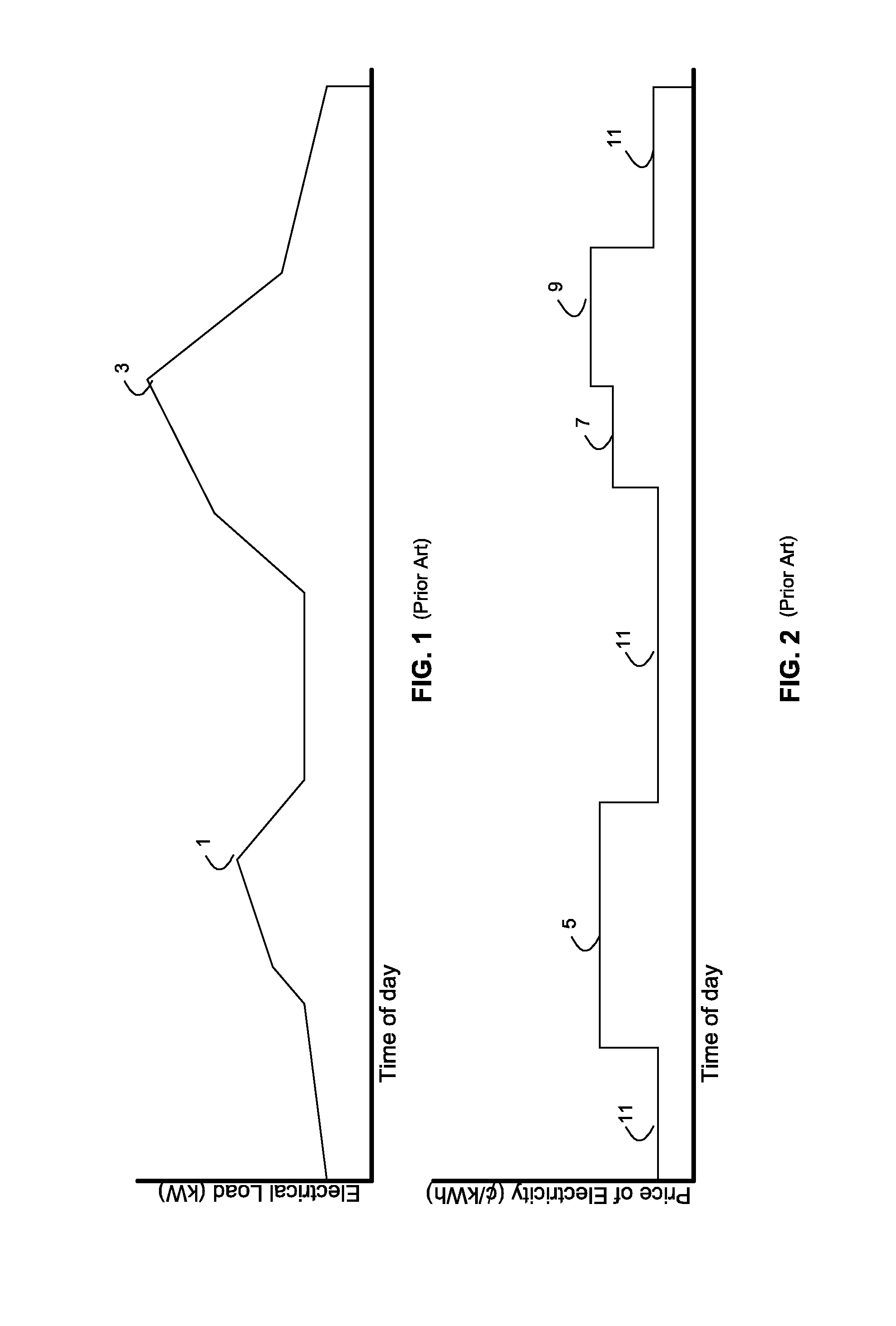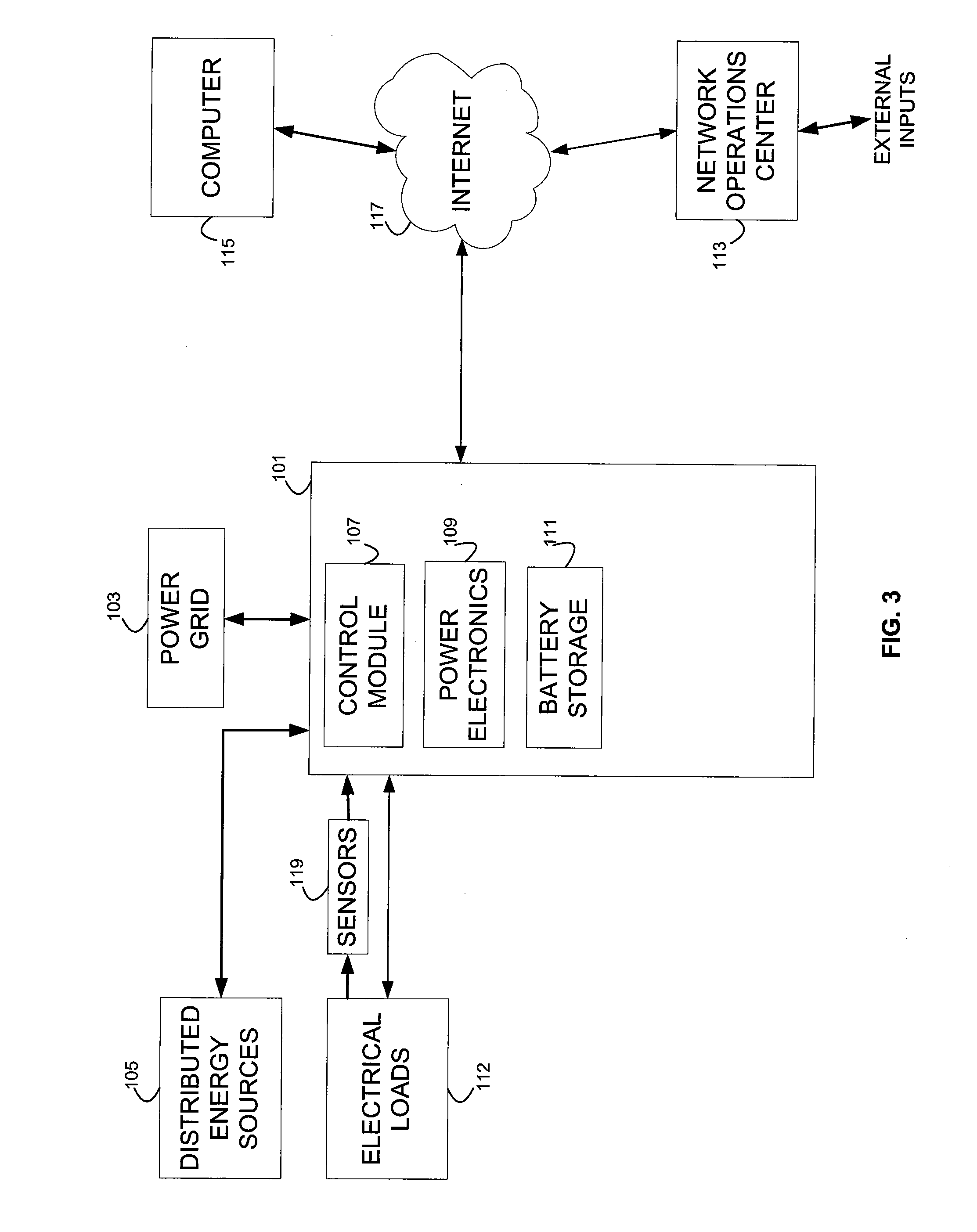Energy arbitrage by load shifting
a load shifting and energy arbitrage technology, applied in the field of energy management, can solve the problems of increasing the energy cost of a utility company for generating or purchasing electrical energy, and the energy cost of the consumer is higher
- Summary
- Abstract
- Description
- Claims
- Application Information
AI Technical Summary
Benefits of technology
Problems solved by technology
Method used
Image
Examples
case 1
[0079] F>R / T, then F*(Sc−C)=FSc−FI / R+I / T=F(Sc−I / R)+I / T, which is a line with a negative slope (for Scc. One can accelerate how quickly that happens, but that will mean decreasing the battery's expected life-span; and the energy bill savings due to the acceleration will not be paying for the life lost (unless Sc>I / R).
case 2
[0080] Fc−C)=F SccR / T (as long as Sc is positive) since Fc).
case 3
[0081] F=R / T=>F*(Sc−C)=ScR / T. Since the longest battery life that can be expected to be achieved is the rated life T, and the greatest savings that can be achieved is R*Sc, both may be expected to be achieved when the cycle rate is R / T. The energy bill savings Sc does not depend on cycling frequency. Thus, the benefit is maximized with R cycles and energy bill savings S, (saving R*Sc dollars) providing a battery lifetime of T years. Unless the total energy bill savings were greater than the initial cost of the battery (R*Sc>I), it would be counter-productive to hasten the battery's demise by a single day.
[0082]Cycles Needed for Backup
[0083]Suppose Q cycles are needed by the battery to last T years providing backup. In this case, it would be assumed that the rated cycles R>=Q. Thus R-Q cycles (the unreserved cycles) can be used for other purposes because those cycles were bought for battery backup but are unnecessary to accomplish that task.
[0084]Cycle Budgets
[0085]It has been shown ...
PUM
 Login to View More
Login to View More Abstract
Description
Claims
Application Information
 Login to View More
Login to View More - R&D
- Intellectual Property
- Life Sciences
- Materials
- Tech Scout
- Unparalleled Data Quality
- Higher Quality Content
- 60% Fewer Hallucinations
Browse by: Latest US Patents, China's latest patents, Technical Efficacy Thesaurus, Application Domain, Technology Topic, Popular Technical Reports.
© 2025 PatSnap. All rights reserved.Legal|Privacy policy|Modern Slavery Act Transparency Statement|Sitemap|About US| Contact US: help@patsnap.com



